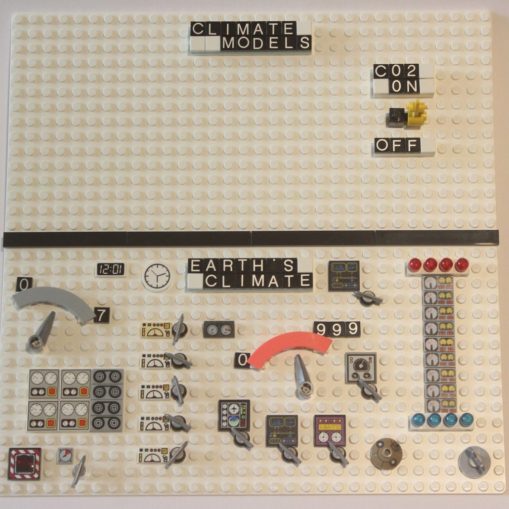
I wrote a few notes on Warble Gloaming recently, and with the gloomfest that is COP26 looming I thought it might be time to revisit them. Here’s the third, where I try to list the various alarming predictions of the past, and this might give you an insight into why I’m not taking today’s pronouncements of Impending Doom too seriously!
Remember old Aesop and his Fables? There’s one about the boy who was set to guard the sheep and as he was bored, he called the alarm to liven things up a bit. Eventually the villagers stopped rushing to help when he sounded the alarm, and he was eaten by a wolf. I think Hillaire Belloc had a Cautionary Tale on the same lines, about Matilda, Who Told Such Awful Lies, They Made One Gasp, and Stretch One’s Eyes. She came to a bad end too, as when she shouted ‘Fire! Fire!’ the people only answered ‘Little liar!’.
Why did this come to mind? Well, I was thinking about the various alarming news items we see today, and then I cast my mind back over the years.
Today we have the Climate Emergency. Before that, we had Climate Change, which emerged around 2011 to replace Global Warming. Climate Emergency has a nice ‘urgent’ ring to it, and Climate Change is better than Global Warming as every freak weather event can be pressed into service, and climate crisis stories don’t have to be confined to the summer season. We’ve had ‘warming warnings’ for the last forty years.
In the mid 1970’s the consensus among the Climate Cassandras was that global cooling was bringing on a new Ice Age. The New York Times reported ‘Scientists Ponder Why World’s Climate is Changing; A Major Cooling Widely Considered to Be Inevitable’ in 1975.
Go back to 1974, and do you remember the hole in the Ozone Layer? Ozone is O3, instead of the regular O2 that makes up nearly 20% of the earth’s atmosphere. There’s a layer of O3 in the upper atmosphere and it is supposed to shield us from ultra-violet rays which would otherwise be Bad For Us.
It came to pass that a scientific paper was published, telling us that the propellants in aerosols were some things called ChloroFluoroCarbons, or CFCs for short. We were told that these were very bad for atmospheric Ozone, and that they were causing a hole in the ozone layer, which was a bad thing. We would all go blind from cataracts as well as being horrifically sunburned.
It turns out that the hole is a seasonal phenomenon, appearing over Antarctica in the Spring, and closing up again in the Winter. There was a lot of hoohah about CFCs and in 1987 24 countries signed the Montreal Protocol banning CFCs. Presumably the other 175 nations on earth just carried on using them. Anyhow, the hole has taken its place in the history of scary stories. Did the Montreal Protocol prevent The End Of The World As We Know It, or was it coincidence that the hole is now largely closed? You decide.
If you go back to the late 1960’s, acid rain was a thing. The theory was that Sulphur Dioxide (SO2) was in the air because of all the coal-fired power stations, and as rain fell, some of the raindrops picked up some of the SO2. H2O + SO2 = H2SO3, or sulphurous acid. Over time, the acid rain was supposed to be dissolving our buildings. You don’t hear so much about acid rain today, perhaps because the buildings are still there?
I’ve heard it said that there is no acid rain today because we’ve reduced our coal-burning. Well, you might have, but not everyone. Germany is still burning Lignite (brown coal) like there’s no tomorrow, and China is opening a new coal-fired power station about every week. I saw a report that China had just opened a new railway line, for the express purpose of bringing coal to the power stations:
https://www.chinadaily.com.cn/a/201910/05/WS5d97d87fa310cf3e3556ecde.html
Two hundred million tons a year. But acid rain is no longer a ‘thing’.
Back in 1956, a chap called M. King Hubbert came up with the concept of Peak Oil. The theory was that oil fields have a finite capacity, and production would slow down as the reserves became depleted. The world would have to use less oil, and the Peak would be around 1970, it was thought. This was before the discovery of more and more reserves, and the use of different methods of extraction such as shale oil, rather blew a hole in the theory, but it held sway for a few years as One More Thing To Worry About.
And if you look at old headlines, you’ll find that from the early 1930’s to the 1960’s the papers were reporting that the earth was getting warmer, while in the early years of the Twentieth Century, the popular press teemed with stories that we were entering into a new Ice Age. In 1923, the Washington Post reported “The discoveries of changes in the sun’s heat and the southward advance of glaciers in recent years have given rise to conjectures of the possible advent of a new ice age”. That weasel word ‘possible’ again.
It makes you think, doesn’t it?
Fire! Fire!
© Jim Walshe 2021



